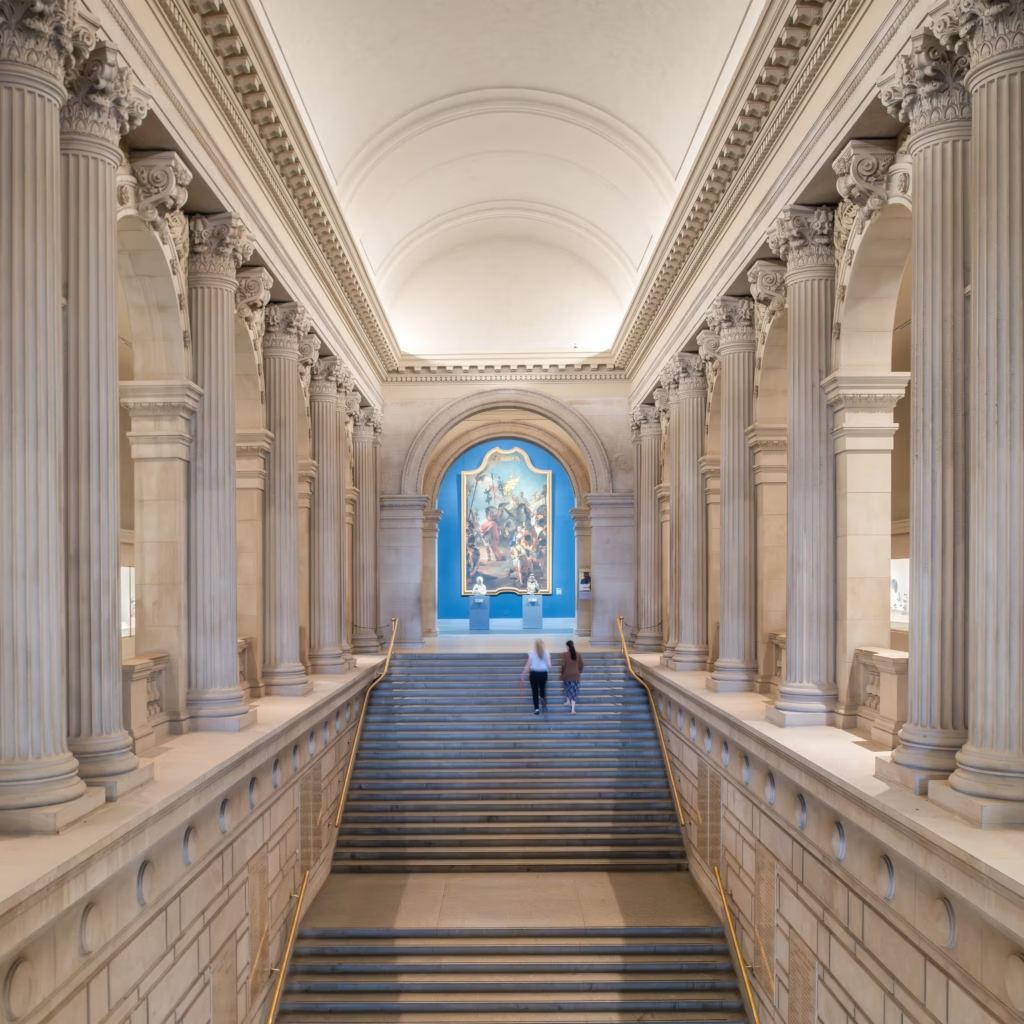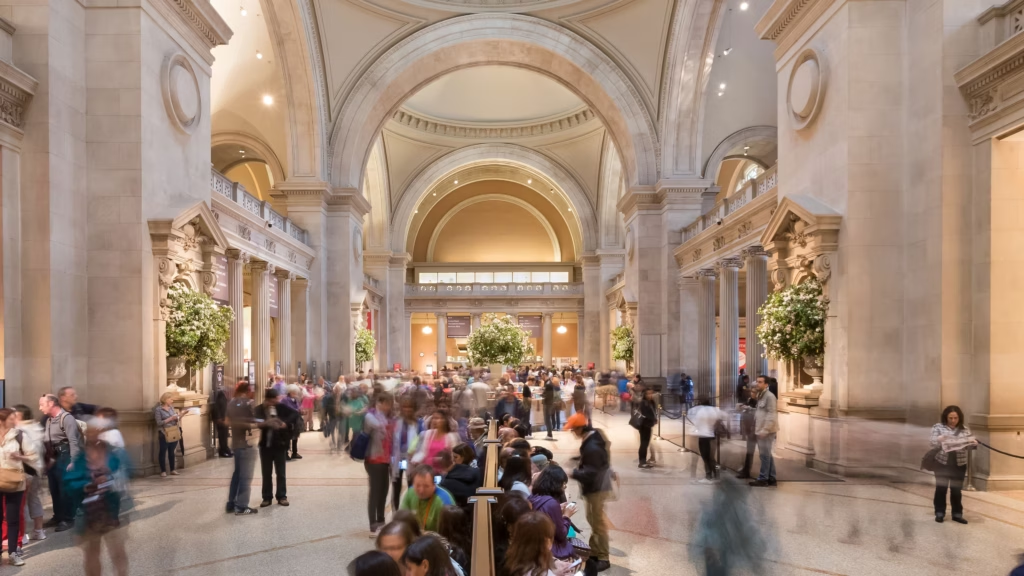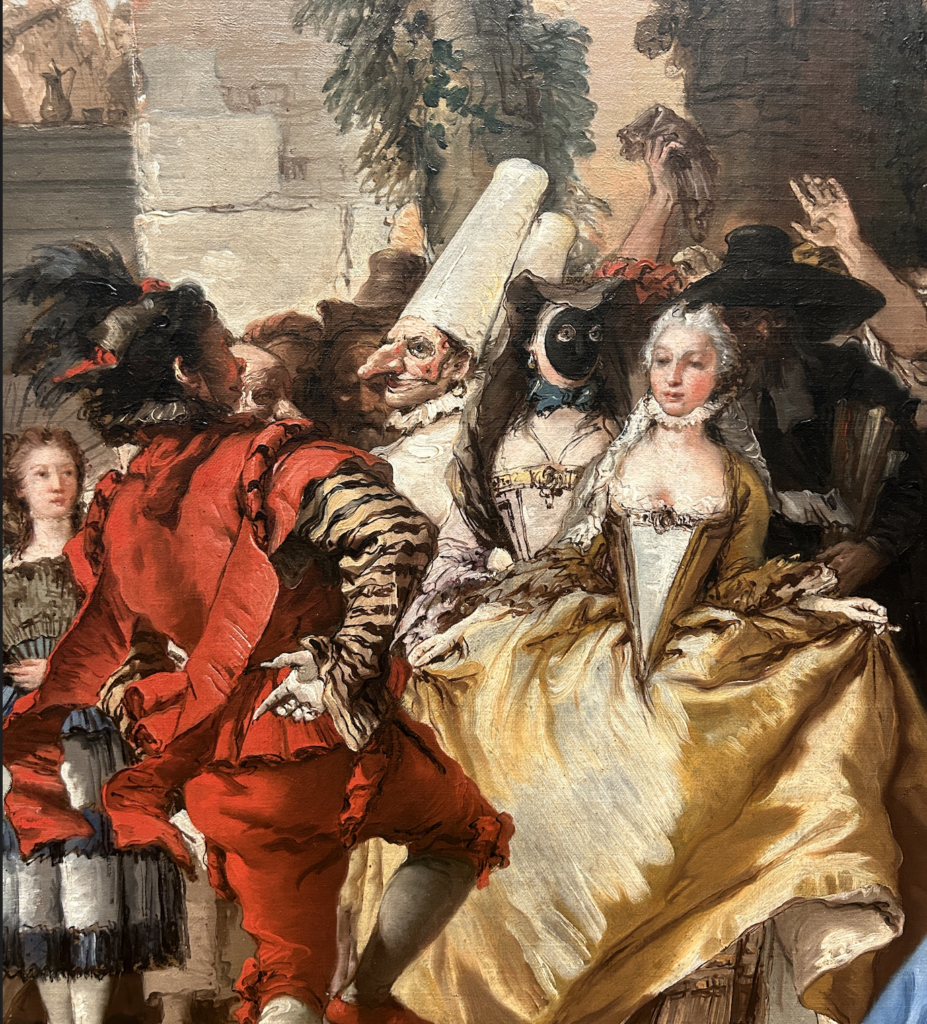An attempt at a “Mission Statement” & Some Background on “Every Last Room“
por·tal: /ˈpôrdl/ noun
noun: portal; plural noun: portals
- 1. a doorway, gate, or other entrance, especially a large and imposing one.
Go to the Metropolitan Museum of Art in New York City and ask any of the red-tied employees how many rooms there are inside The Museum, and you’ll get a colorful array of answers.
400. 500. 600.
I dunno. Way too many if you ask me.
Are you counting the basements?
What constitutes a room?
Who are you?
Count them yourself, how the hell should I know?
All answers, to be sure. But what if you want a more… satisfactory answer?

I’ve been visiting the Met almost as long as I’ve lived in New York, just shy of nine years. In that time, it’s gone from an intimidating monolith in an unfriendly neighborhood to a bewildering, mercurial friend in a still-kinda-unfriendly neighborhood. The Museum is always changing, never the same. You fall in love with a room, or a painting, or an object one day in the summer. A few months later in the depths of winter, you’re called to go see it again, only to find that it’s been shifted into storage, leant to another museum, or moved to a distant gallery and the good-natured, long-suffering guard on duty has no idea where it could possibly have ended up. Room themes change, whole wings close for renovation, the place itself seems to shift beneath your feet. The emotionally sensitive among us cannot, therefore, afford to fall in love with individual objects except in the most extraordinary cases. The operative assumption of this project is that Every Last Room at a painstakingly curated institution like The Met offers something to be admired on any day you go, no matter what hangs on the walls or sits in the display cases that particular day.
The deeply personal (read as: don’t tell me I’m wrong) reason for this assumption is something like the heart of this project, and it goes a little something like this: Museums like the Met are not primarily to be experienced as displays of art, but as portals into distant dimensions. Therefore, the central claim of this project is that this is an underrated reason to visit museums. By bringing you into these portals and providing a guide to the relative quality of the ones that exist inside The Met, I hope to convince you that time travel is not only possible, but eminently accessible. Freaky, right? Okay, stick with me.
What do I mean by this? I mean that, in the course of this project, I will be interested primarily in the act of “time travel” via the art and artifacts held at The Met. That is: looking deeply into paintings, sculptures and archaeological and cultural works, situating them in their proper historical context, and allowing the mind to slip through time and space to the world from which the object came, or that which the art depicts. I mean this physically. This is an act of imagination that involves the entire body. There is something qualitatively different about seeing well-restored and meticulously cared-for objects in person, and I assert that this cannot be replaced. You stand there, inches away from something that exists in only one place and only one time: there and then, with you. You breathe, you close your eyes, you allow yourself to imagine. One steps into a painting; a sculpture pulls you into its society of origin. A suit of armor beckons you to don it. You accede. You leave the room, The Museum, the city, the timeline.
Perhaps you’ve done this before. I’d imagine almost everyone has at one point in their life. Have you ever stepped into a very old building and wondered: Who used to live here? What was their life like? Or been dragged to a set of ruins on a field trip, or seen a historical re-enactment, or even watched a movie set in the distant past? Did you find yourself wondering: Who would I have been, if I’d lived back then? What job might I have performed? Who would I have loved? How would I have fared? If this is something you’ve never done, this project may not be for you. I hope you find yourself back here in the future. If this is something you’ve found yourself doing, then welcome, kindred. There is no place more suited to this peculiar pursuit than the Metropolitan Museum of Art.
***
This year, at the downright vintage age of 33, I enrolled at Columbia University to pursue a degree in history. Don’t ask me why, I have no good utilitarian reason for it. This was a choice guided by instinct, and now here I am, reviewing rooms at The Met. Last summer, concurrent with my application and just prior to my arrival at Columbia, for reasons likely related, I found myself in a spiral of obsession: I simply could not stop going to The Met. It started innocently: once a month in the winter, before worsening (bettering?) to every third weekend in the spring, and then every single weekend and sometimes multiple times a week in the summer. I was living in Bushwick, Brooklyn at the time, so it was hardly down the block, and yet I found myself back under that limestone facade, again and again. I went so often that it became a joke among my friends. But I couldn’t stop, the place was nourishing me in a way I couldn’t quite understand and yet felt no need to question.
If you live in New York City and you have the time and inclination to go to a museum, let’s be honest: you’re fortunate, and more than likely you’re very fortunate. At the least, you have access to the greatest city on Earth and, by extension, the Met. Any New Yorker who engages continuously (note: not necessarily frequently) with the Met will slowly and surely turn themself from a completely unredeemed philistine to that least rarified and most irritating type of person: a completely unredeemed philistine with a couple strong opinions. The Met draws it out of you, turning even the most jaded repeat visitor into an appreciator after a few visits. One can’t help but form opinions. You find a wing that feels oddly like home, a painting that links you to a person you visited with, or an emotional state you were in the last time you came and of which you hold a dear, cherished memory. And so, slowly and invisibly, the place shapes you.
All museums do this, even the more narrowly-focused “Art Museums” (only the littlest bit of shade intended), but I believe a certain kind of institution does this especially well: the so-called “Universal” or “Encyclopedic” museums. Examples include the Met, the British Museum, the Louvre, and my hometown museum and first true love, the criminally underrated Philadelphia Museum of Art. By pairing what people traditionally think of as art: Impressionist paintings, Blue Ribbon modernism, the obligatory busts and sculptures and some funky contemporary installations with archaeological artifacts and the material culture of civilizations past, they create a survey of human history in the broadest sense. Breadth is the goal. The most important thing a Universal Museum tries to accomplish, I believe, is a sweep across time and geography that attempts to sample from as many cultures as possible, and to house them all under one roof. Doing so, a universal history and a unifying narrative emerges.
Great museums, especially great Universal Museums, are crucibles, they are forges. This is the reason for the oft-experienced and little-understood phenomenon of museum fatigue. Museums, at least the best of them, force you to change. They shove novel stimuli, images, ideas, archetypes, and historical concepts into your mind, and they do it relentlessly. The Art of The Museum (as opposed to The Museum of Art) is to lay out these stimuli as elegantly as possible, without sacrificing depth or comprehensiveness. The Met, more than any museum I’ve ever encountered, achieves this in spades.
But what’s an inexperienced visitor to do in the midst of universal narrative?
I don’t have time to see everything. I hear that. So much precious energy is wasted in rooms that aren’t “worth” one’s time. I hear that too. My feet hurt. I know. It’s too damn big. I completely agree. Why can’t we just get to the good stuff? Well… enter this project.
***

Okay, to the point, then: the goal of this project is two-fold: 1) To deepen you, the reader’s, experience of The Met, and 2) To deepen my own. My hope is that, if you’re a tourist, or a freshly-arrived New Yorker, or even a jaded, been-there-done-that-so-what-big-whoop veteran of the city, the reviews I aim to write will provide you with guiding touchstones for your next visit(s) to The Met.
So how’s this going to work?
Simple: Each room will be given a short-ish review and assessed on a variety of metrics. These will be compiled into a composite rating on the traditional scale of 1-10. It’s that easy.
A few notes on methodology:
- Much weight will be given to the vibe of the room: the quality of the lighting, the materials of the walls and floors, the spaciousness or lack thereof, the seating options, the color and material of the wallpaper etc. More on why in a moment.
- I am not attempting to review the art itself; I have neither the training nor the hubris to do so. However, I do have opinions and a vague sense of the hierarchy of artists and their works. If a room has a major work, or a bunch of pieces by a favorite artist of mine, I will say so. Yes, the art matters. No, it does not matter most.
- Of course there are going to be times when certain artists and motifs and decorative themes will strike one person more intimately than another. My goal here is not to be impartial, not even close. My goal is to present a completely biased, utterly partial view of an institution that has impacted me in a completely biased, utterly personal way.
- One of the main difficulties I foresee is that the grandeur of a few dozen rooms at The Museum will inevitably defy my attempts to review them as a whole. For these (the most obvious example being Greek and Roman sculpture rooms) I will attempt to break them up in some sensible, organic manner (e.g., if the room is split by two rows of columns, I will give it three reviews, and so on.)
- A note on the ratings scale: It’s my best guess at the outset that there are around 400 individual rooms at The Met, and I will end up writing somewhere in the neighborhood of ~500 reviews. This could be way off in either direction, I don’t know. In the interest of making a scale that is truly representative and not overly skewed towards over-enthusiasm, I’ve decided from the beginning that I will only give out five “Perfect Ten” reviews. I already know what a few of them will be. It seems right that a perfect score should apply to only ~1% of the rooms. I don’t care about forming some perfect Gaussian distribution with the remaining rooms. Eat your hearts out, statisticians.
- Caveat lector: All of this may change as the project evolves over time.
It should be firmly stated that my personal disregard or distaste for any specific room should not be taken as a red light, or a reason to avoid a room, but rather as an invitation to prove me wrong. I am often wrong. I am not an art historian or even a regular historian. I almost never know the full story of what’s happening with a grouping of certain pieces, or their backgrounds, and I eagerly welcome engagement and discussion if you happen to know more about something than I do. If I miss something, tell me I’m wrong and tell me why I’m wrong. If I dissed a room you love, give me a reason to go back and change my mind.
As for vibes: I want to re-state that this is a review of The Met as a place, as a series of connected rooms, and as a Portal: a collection of individual, unique spaces capable of invoking moods, inspiring feelings and sending one flying through time and space. The Museum has housed me during rainstorms, cheered me in dark times, met me in melancholy, and widened my smile on summer nights when all was right with the world. The place is full of moods, and once you have a decent lay of the land and it ceases to feel utterly new, you will inevitably find yourself returning to seek out your favorite, wings, rooms, even individual pieces of art that support the way you want to feel that day.
The goal of the project is to tell you which rooms can support which moods, how excellent they are at that task, and help guide you towards the emotional and visceral experience you want on any given day. I absolutely adore this place and the history it houses within it. I am forever grateful to those who protected these artifacts and brought them to New York City. I applaud the caretakers of the Met who have tirelessly protected and contextualized the world’s history for me, a hopeless philistine with a few too many opinions, and I hope this project can spread a bit of my gratitude to you. Cheers.
- Conor Michael Logan, December 2024

